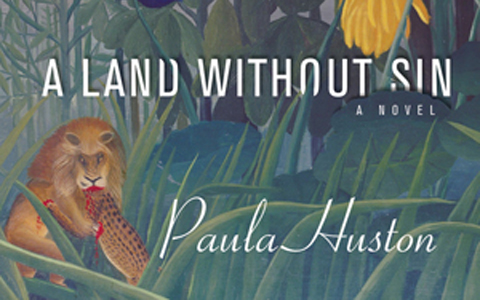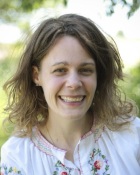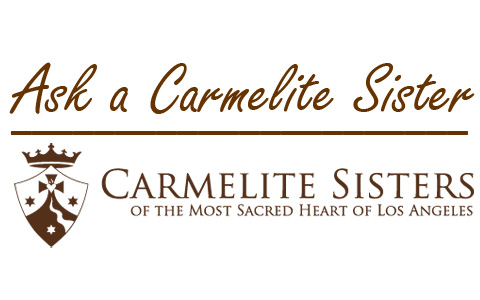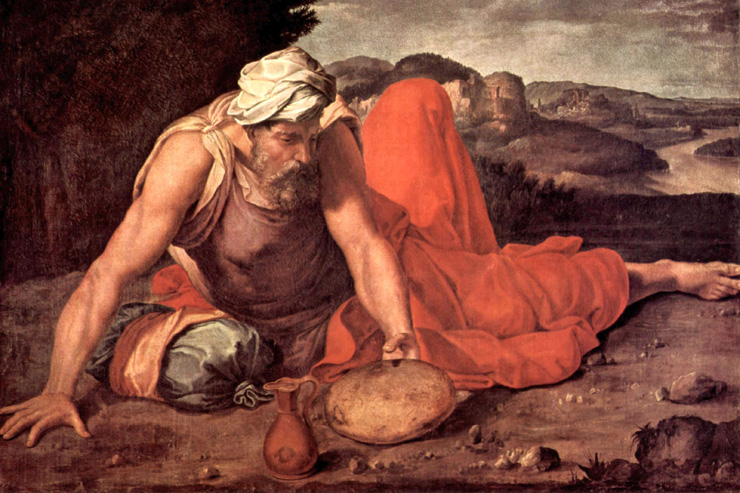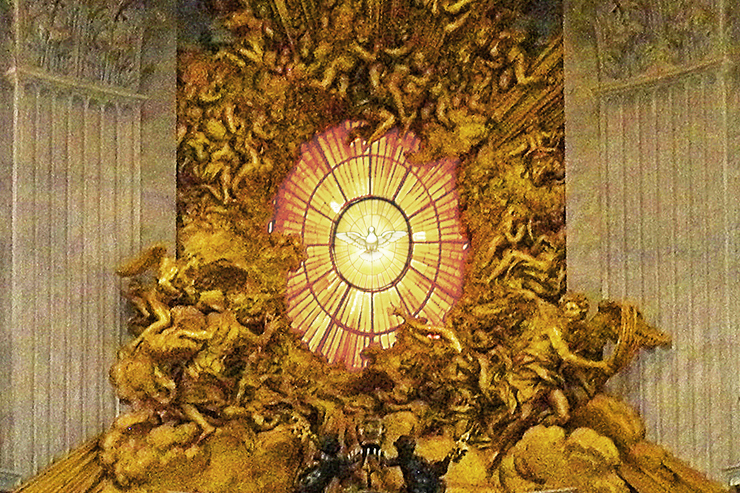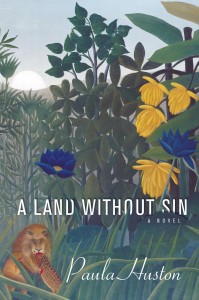 It’s not so hard to find a good story. I mean, my grandma and my father-in-law tell them all the time. My kids, in fact, come up with some really good ones.
It’s not so hard to find a good story. I mean, my grandma and my father-in-law tell them all the time. My kids, in fact, come up with some really good ones.
But to find a well-written story is to find a gem, and what I have to share with you today is an interview with an author who has written just such a book.
A Land Without Sin is the latest book by Paula Huston, but unlike the last few I’ve read and loved, this is a novel. A good story. A compelling page-turning rockin good story.
In other words, one I’ll be recommending to my fiction book club, one I’ll be sharing with anyone who will listen, one that has my name in the front cover because I’m sure to reread it at some point.
Paula was kind enough to answer a few questions for us. After our chat, be sure to stick around and read the excerpt her publisher let us include.
Paula, you’ve had a big break between novels and in the midst you’ve written a number of nonfiction books. Tell us what inspired you to pick back up your fiction pen and how this story came to be.
Actually, fiction has always been my first love. I began publishing short stories in my late twenties and my first novel, Daughters of Song, was published by Random House in 1995, when I was forty-three. The book got good reviews, my editors were happy, and it looked like my course was set–I’d be joyfully writing novels for the rest of my life. But when I turned in my second book for the same publisher, only to have them reject it, all my lofty expectations came crashing down around my ears. I had no idea that so much of my identity was wrapped up in being a fiction writer; suddenly, I wasn’t sure of anything anymore. But just about that time–in fact, within a day of that awful phone call from New York–I met a wonderful editor, Tom Grady, who had just set up his own literary agency. As it turned out, he was a devout Catholic, and he was hoping to specialize in spiritual writers (eventually, he became the president and publisher at Ave Maria Press). I told him my tale of woe, he encouraged me to think about doing a different kind of writing–spiritual nonfiction–and within a year, we were hard at work on a joint project called Signatures of Grace: Catholic Writers on the Sacraments. Then he urged me to write a book about simple living, which became The Holy Way (Loyola, 2003). I found that all those years of fiction writing helped me talk about the spiritual life in what for some readers seemed to be a less threatening way, through story. I went on to write four more books of spiritual nonfiction, but never stopped missing the novel. Then last summer I got an email from a another editor friend, Gregory Wolfe, who was about to launch a new literary imprint called Slant. I sent him that long-ago rejected manuscript, he liked it, and through a series of thoughtful questions, helped me completely re-see the story. The result it A Land Without Sin–a far better novel than it would have been back in 1997, thanks in great part to all those years of writing spiritual nonfiction. God does indeed work in mysterious ways. . . .
Your book has intrigue, Catholicism, and evil. What do you hope to bring to readers as they plunge into the plot and read your tale?
I was raised a Christian but rejected faith at the age of seventeen after spending a summer with a medical volunteer program in a Central American village. I was a typical middle-class American kid from Southern California, and it was the first time I’d come into contact with evil–in this case, the evil of war, not to mention the abject poverty that results from economic and political oppression. I decided that God, if he really did exist, could not possibly be good or he wouldn’t allow all this seemingly gratuitous suffering. And I called myself an atheist for twenty years. Yet ironically enough, it was the reality of evil–this time, the destructive effects of my own narcissistic choices–that once again brought me to my knees. And when I finally edged my way back into a Christian community, it was through the door of Catholicism, a church that drew me in part because of its robust philosophy regarding the reality of sin and wickedness. Ironically, it is this unshakeable stance that has put Catholicism in direct conflict with some aspects of contemporary thought–particularly the valorization of moral tolerance. As a result, the Church is often accused of being puritanically out of touch with modern reality. Yet the great saints, martyrs and who knows how many devout but anonymous Catholics through the ages have not only been shining examples of Christlike love but intrepid warriors against malice. That is one of the truths I believe we are danger of forgetting and something I wanted to highlight in the story.
What was the hardest part about writing fiction after so many years “off” and writing such different works?
One of the great blessings of writing spiritual nonfiction is that you can say things directly. You can talk about God or quote Bible verses or make biblical allusions, and your readers will usually get what you mean and not be offended by the references. Writing fiction for a general audience is quite a different proposition. You have no idea what they know, particularly when it comes to the religious elements of your story. You have no idea what prejudices they harbor, or what they will find offensive. Yet you want them to give you a chance. You want them to fall in love with your characters and be willing to follow them through to the end. So you must learn to “tell the truth but tell it slant,” as Emily Dickinson put it. And the way you do that is to be true to your characters–to make sure they always think and behave in plausible ways, given their personalities and natures. You are no longer speaking your own truths but theirs, no matter whether you agree with them or not. It’s a very mysterious process, and one that requires both spiritual and creative faith.
How did you fit your writing into the rest of your life? How did your deep faith come into play as you crafted your storyline?
Well, I have been a writer for so many years by now that this particular writing adventure was not a whole lot different than the others. I can only write effectively for four hours at a stretch, so my regular daily schedule is to use the morning hours for other chores, preferably manual, and not sit down at my computer until I am physically tired and ready to stay put for awhile. Usually that happens around 2:00. Fortunately, my husband is busy with creative projects of his own and doesn’t mind eating dinner later in the evening. As for how my faith fits into all this, I have been a Camaldolese Benedictine oblate for many years, and Benedict’s famous dictum is “ora et labora,” or “prayer and work.” My work just happens to be writing. If that work does not take place in an atmosphere of prayer, in the midst of a day that includes service to others and all the other necessary and sometimes highly inconvenient tasks of responsible living, then it’s no good–it becomes too self-centered and can’t find its way toward truth. Writing may be the job God gave me, but beyond that particular job, I am called to all sorts of other work besides. And as I found out the hard way long ago, letting writing take over and dominate my life is totally destructive of a healthy spirituality. It’s got to take its proper place, and I’m the only one who can stay on top of that.
And finally, I’d be remiss not to ask whether you consumed massive amounts of coffee while writing this book. If not, what was your reward of choice?
Earl Gray tea with honey. Salted cashews. Red wine. Dark chocolate. Obviously, writing a 300-plus page novel can be a perilous enterprise. . . .
Here’s an excerpt of A Land Without Sin to get you started. Used with permission of the publisher.
Tikal, Guatemala, 1993
I was looking for my brother. Whether or not Stefan even wanted to be found, I did not know. By now he could be the neo-Che of the Lacandon jungle, or lying in his own filth in a Chiapan jail, or even dead. Because of the way our family is, we’d only been in the same country at the same time on a very sporadic basis for the past sixteen years, the most recent occasion being his priestly ordination, so it was hard to say what was going on with him. But I was ready for anything.
In my clothes were sewn a false passport bearing a two-year-old photograph of him, the best I could do, and a one-way ticket out of Mexico, in case we had to scramble. And because I didn’t know whose list he might be on, I had a fake passport of my own, one made for me when I dated a USIA man stationed in Burma. This USIA man’s theory was that no American female could be overly prepared for extended stays in international hotspots, and since it looked like that’s where I would be spending my time, I took him up on his offer. A helpful fellow indeed, he also taught me to throw a knife, a handy trick he no doubt picked up in CIA school, even though he would never admit he’d been.
Besides the false passport, I had a false job, thanks to a fellow freelancer I first met while I was still schlepping my cameras through war zones on behalf of the Associated Press. I bumped into Dirk a few months ago in Burundi, right about the time I heard about Stefan’s disappearance. Dirk told me that a Mayanist named Bource was looking for a good photographer who was used to roughing it and used to the jungle and didn’t care about making campesino wages for the next couple of months. Given the annual income of most freelancers, this could have been almost anyone–under normal circumstances, it would have certainly been Dirk, who would go anywhere, anytime, as long as there was a good chance of dying in a heroic manner and/or securing himself a book contract with a major publisher. But Dirk was getting married, a recent trend among my footloose cronies. I’m thirty-eight, he said, as though that would explain it.However, thanks to Dirk’s new direction in life, I now had my cover and an airtight excuse for snooping around in Central America, where I had not been for nearly ten years and which I had not missed in the slightest.
My false boss for the false job, Bource, turned out to be a bespectacled, formerly-handsome Dutchman in a red baseball cap who asked me, in a gloomy, preoccupied way, to please call him Jan. He, of course, did not know he was helping me in my scam and clearly was not the kind of man who would understand the need for duplicity. He’d told me to meet him in Guatemala, in the island town of Flores, which was not exactly where I needed to be. But we were at least pointed in the right direction, and I could afford to be patient.
Jan’s son, Rikki, a mere sixteen but already, I noticed, a stunning young pre-man, was extremely efficient and not at all gloomy, and the family truck, as his father had requested, was loaded and ready to roll at 3:30 that afternoon. We were headed for Tikal, perhaps the only Maya site in Guatemala with one hundred percent name recognition, though I myself, being more focused on current events than dead civilizations, had always vaguely supposed it to be in Honduras. I’d been set straight on this by my Aviateca Airlines seat-mate, a bearded Berkeley rainforest savior headed for the Biosphere Reserve, and his lecture pretty much covered my knowledge of the Mayas.
Riding around in remote places with strange men was something I was used to, and in spite of the big question mark concerning my brother, I could feel myself getting primed for a new adventure. I knew a dog once who ran like a racehorse, tongue streaming back, black ears flying, and who could run like that for hours and then go unconscious for half a day in the sun, twitching and dreaming, and then wake up and start running again. There was nothing this dog was running toward, nothing it was trying to catch. Running was it, pure and simple. That was me at the start of something new.
Sarah Reinhard is a Catholic wife, mom and author whose nose is probably in a book if she’s not scraping something off of her shoes. Her latest book is A Catholic Mother’s Companion to Pregnancy: Walking with Mary from Conception to Baptism. Check out all of her books at http://sarahreinhard.com/writing/my-books/.
Visit Sarah’s website: http://sarahreinhard.com/
If you liked this article, please share it with your friends and family using the Share and Recommend buttons below and via email. We value your comments and encourage you to leave your thoughts below. Thank you! – The Editors

